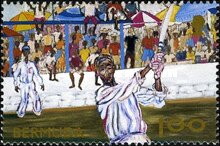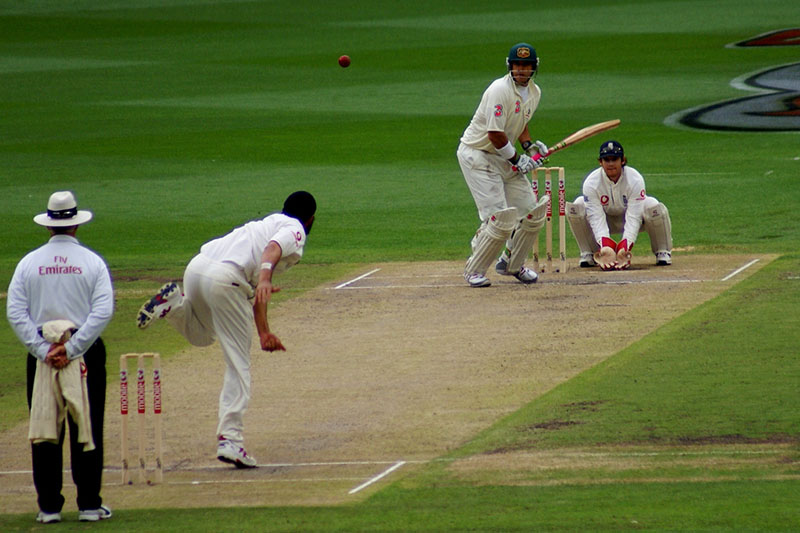Stamp: Painting "One Hundred Up" (Bermuda 1999)
Painting "One Hundred Up" (Bermuda 1999)
21 July (Bermuda ) within release Cricket Cup Match, Cent. goes into circulation Stamp Painting "One Hundred Up" face value 1 Belize dollar
| Stamp Painting "One Hundred Up" in catalogues | |
|---|---|
| Michel: | Mi: BM 824 |
Stamp is square format.
Stamp from souvenir sheetStamp Painting "One Hundred Up" it reflects the thematic directions:
Cricket is a bat-and-ball game that is played between two teams of eleven players on a field at the centre of which is a 22-yard (20-metre) pitch with a wicket at each end, each comprising two bails balanced on three stumps. Two players from the batting team (the striker and nonstriker) stand in front of either wicket, with one player from the fielding team (the bowler) bowling the ball towards the striker's wicket from the opposite end of the pitch. The striker's goal is to hit the bowled ball and then switch places with the nonstriker, with the batting team scoring one run for each exchange. Runs are also scored when the ball reaches or crosses the boundary of the field or when the ball is bowled illegally.
Painting is the practice of applying paint, pigment, color or other medium to a solid surface (support base). The medium is commonly applied to the base with a brush, but other implements, such as knives, sponges, and airbrushes, can be used. Painting is a mode of creative expression, and the forms are numerous. Drawing, gesture (as in gestural painting), composition, narration (as in narrative art), or abstraction (as in abstract art), among other aesthetic modes, may serve to manifest the expressive and conceptual intention of the practitioner. Paintings can be naturalistic and representational (as in a still life or landscape painting), photographic, abstract, narrative, symbolistic (as in Symbolist art), emotive (as in Expressionism), or political in nature (as in Artivism). A portion of the history of painting in both Eastern and Western art is dominated by spiritual motifs and ideas. Examples of this kind of painting range from artwork depicting mythological figures on pottery, to Biblical scenes rendered on the interior walls and ceiling of the Sistine Chapel, to scenes from the life of Buddha or other images of Eastern religious origin. In art, the term painting describes both the act and the result of the action. The support for paintings includes such surfaces as walls, paper, canvas, wood, glass, lacquer, clay, leaf, copper and concrete, and the painting may incorporate multiple other materials including sand, clay, paper, plaster, gold leaf, as well as objects. The term painting is also used outside of art as a common trade among craftsmen and builders.


